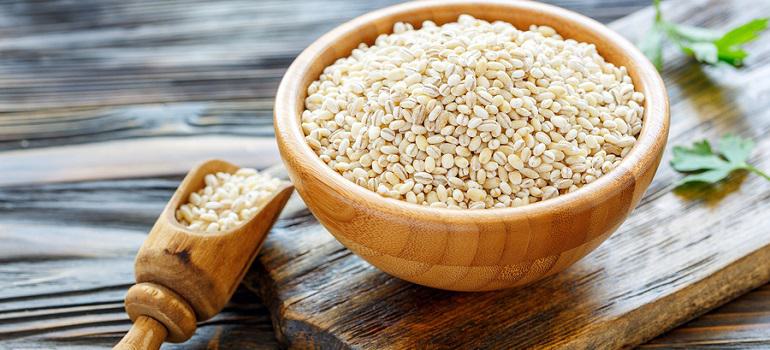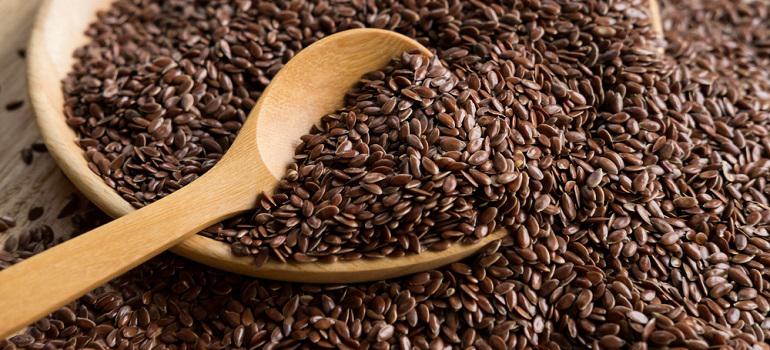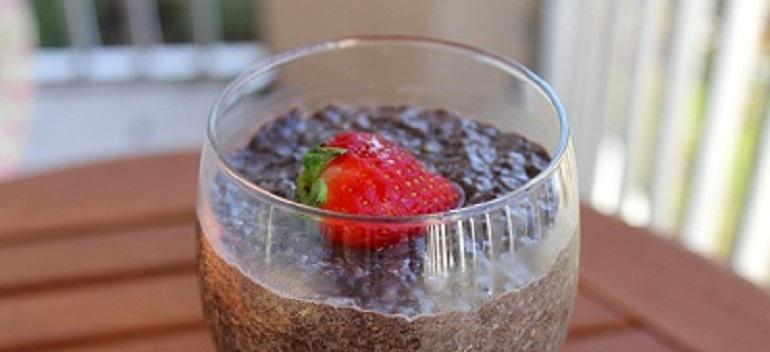It's no secret that vitamins and nutrients are an essential part of a healthy diet. While your body needs various nutrients to function, each one plays a different role in your health. If you're eager to learn more about nutrients that aid in digestion, then you've landed on the right article. Consuming the right amount of fiber will boost your body's digestive process and keep you regular. However, too much fiber can have adverse effects. So, how can fiber support your body, and how much of it do you need to maintain a healthy digestive system? Fiber is a more complicated nutrient than it may seem. Keep reading as we dive into fiber and digestive health, and the benefits a fiber-rich diet offers.
What Is Fiber?
When discussing dietary fiber, what we're actually talking about is the parts of plant-based foods that your body cannot naturally process. Almost all other nutrients in food are broken down during the digestive process and allocated to where they are most needed. Fiber, however, passes through the body nearly untouched and exits in a similar form as when it entered.
So, if fiber is a nutrient your body can't even digest, why is it so important? While fiber is not digested, it still aids in several digestive processes. When eaten, fiber passes through the stomach, small intestine and large intestine, binding to various nutrients to make your food easier to digest.
Types of Fiber
There are three essential types of fiber, all of which must be obtained through the foods we eat. These fiber types all play a different role in the body, and it's crucial to consume enough of each to keep things in working order. The three main types of fiber include:
Insoluble Fiber
Insoluble fiber is a type of fiber commonly found in plant cells. Insoluble fiber doesn't dissolve in water, nor does it ferment in the colon as soluble fiber does. This specific type of fiber provides added bulk when moving food through your digestive tract. This added dimension speeds up the movement of the food and can help relieve constipation. To increase your soluble fiber intake, start by consuming wholesome foods like whole wheat, dark leafy green vegetables, fruit with skin and brown rice. By raising the levels of soluble fiber in your body, you can help boost digestive health and maintain regularity.
Soluble Fiber
[caption id="attachment_1170285" align="aligncenter" width="770"]

Pearl barley in a bowl and scoop with barley on the old wooden table.[/caption]
Like insoluble fiber, soluble fiber is found in whole foods like plants. Some of the largest soluble fiber sources include beans, root vegetables, fruits, legumes and grains like oats, wheat and barley. Used throughout the digestion process, soluble fiber's most significant area of impact is the colon. The colon is packed with good bacteria. These good bacteria work to keep our gut a digestive system healthy and balanced. When eaten, soluble fiber acts as a food source for the good bacteria in the colon, allowing them to thrive.
The main difference between soluble and insoluble fiber is that soluble fiber dissolves in water and, by doing so, retains it during digestion, transforming into a gel-like substance. As soluble fiber passes through your body, it soaks up water and slows down the digestion process. This allows for better nutrient absorption by the stomach and intestines and can prevent diarrhea and constipation.
Eating foods that are rich in soluble fiber will not only promote healthy bowel movements and well-working digestive systems but will also boost heart health. Just as soluble fiber absorbs water, it also absorbs cholesterol particles in your system and removes them from the body. The result? Reduced overall cholesterol levels and a well-protected heart.
Prebiotic Fiber
A third commonly discussed type of fiber is prebiotic fiber. Prebiotic fiber is a type of soluble fiber labeled as fructan or inulin. This specific fiber is mostly found in foods like asparagus, garlic, onions, leeks, bananas, root vegetables and grains. Like all forms of fiber, prebiotic fiber cannot be digested. However, it does help keep the good bacteria in your gut flourishing. Now, you may still be confused about how a food source unable to be digested by the body can help it. The inability of prebiotic fiber to be digested is what gives it its gut-healing powers. Because prebiotic fiber can travel to your lower digestive tract unaltered, it can act as a food source for good bacteria and promote a healthy gut biome.
5 Ways That Fiber Helps with Digestion
Both soluble and insoluble fiber work together to keep your digestive system healthy and to help prevent disease. While each type of fiber plays a specific role in your digestive health, many of the benefits they produce overlap. Continue reading to learn more about fiber and digestion.
Helps Keep You Regular
Maintaining digestive regularity plays an essential role in feeling your best. When it comes to staying regular, each type of fiber plays a unique role in the process. The bulking properties of insoluble fiber and the gel-like consistency of soluble fiber make it easier for stool to pass through your colon. This helps reduce the risks of constipation. Additionally, because insoluble fiber attracts and retains water, it also helps reduce the likelihood of diarrhea.
Promotes Healthy Gut Biome
A healthy gut is a happy gut. In the health and wellness industry, there's a lot of talk about good gut bacteria. With prebiotics and probiotic supplements being at the forefront of modern gut health, many individuals often forget that you can obtain these nutrients directly through the food you eat. Fiber is an excellent source of food for good gut bacteria, and the health of our colon thrives on it. Eating fiber-rich foods like barley helps that healthy bacteria flourish to better assist in proper digestion and nutrient absorption.
Balances Cholesterol Levels
 Too high cholesterol levels can significantly impact the health of your heart. If you're searching for a way to lower cholesterol levels naturally, speak with your healthcare professional about adding more fiber to your diet. In its gel-like form, soluble fiber binds to the bad kind of cholesterol and helps eliminate it from your body. To help your body maintain healthier cholesterol levels, try incorporating more soluble fiber-rich foods into your diet like flax seeds, whole grains, wheat bran, and fruit and vegetables (with the skins intact).
Too high cholesterol levels can significantly impact the health of your heart. If you're searching for a way to lower cholesterol levels naturally, speak with your healthcare professional about adding more fiber to your diet. In its gel-like form, soluble fiber binds to the bad kind of cholesterol and helps eliminate it from your body. To help your body maintain healthier cholesterol levels, try incorporating more soluble fiber-rich foods into your diet like flax seeds, whole grains, wheat bran, and fruit and vegetables (with the skins intact).
Keeps You Fuller for Longer
Want to stay full in between meals? Add more fiber to your diet! Because fiber adds bulk to your food and slows down digestion, it also slows down the stomach's emptying and keeps you feeling full for longer. Adding foods that are high in fiber to your meals is an excellent way to ensure that you remain focused and energized throughout the day. Plus, it will keep you reaching from a candy bar when that midday sugar craving hits!
Helps Better Absorb Nutrients
We've talked about the many benefits of slowing down digestion, one of the most important being the absorption of nutrients. As fiber slows down the digestion process, it allows your body to absorb more nutrients from the food passing through. If you're low in specific vitamins or minerals, add more nutrition to your diet that includes those minerals along with some fiber. Doing so will make sure that you reap all of the benefits.
How Much Fiber Should You Eat Daily?
The optimum amount of fiber needed will depend on your unique health requirements. The next time you visit your health professional, discuss how much fiber you're eating and if adding more fiber-rich foods would benefit your health. In general, it is recommended that most individuals consume between twenty-five to thirty grams of fiber per day from food, not supplements. If you're having trouble adding fiber to your diet, continue scrolling as we discuss a few of our favorite fiber-rich foods to work into your meals.
Fiber-Rich Foods
Legumes
 Split peas and lentils are excellent sources of fiber. To work more legumes into your diet, start by making this wholesome Lentil Soup Recipe.
Split peas and lentils are excellent sources of fiber. To work more legumes into your diet, start by making this wholesome Lentil Soup Recipe.
Beans
Looking for a high fiber food that's just as tasty as it is healthy? Make sure your next meal contains beans, and try out these Macedonian Baked Beans.
Grains
Grains are loaded with fiber and endless possibilities. Eaten for breakfast, lunch and dinner; grains are an excellent way to up your fiber intake safely. For a breakfast that your entire family will enjoy, make these Oatmeal Pancakes.
Vegetables
Veggies are always a good idea. Work more vegetables and fiber into your diet with this Vegetable Barley Risotto.
Seeds
 Want a quick way to add fiber to a meal without changing the taste of it? Start with seeds. Seeds are excellent for you and incredibly versatile. Add them to your favorite smoothie or turn them into pudding with this Chocolate Protein Chia Pudding.
Adding fiber to your diet is an excellent way to boost your body's health and clear up any digestive issues that you may be experiencing. Whether you choose to incorporate a few of the fiber-rich foods listed above or center your entire meal around the fiber, your body will thank you for the effort. We hope that this article has helped better inform you of the many benefits fiber adds to the digestive process. As always, we'd love to hear what you think. Let us know your favorite fiber-rich foods and how you add them to your diet in the comments below. From everyone at Bob's Red Mill, have a healthy and fiber-filled day!
Want a quick way to add fiber to a meal without changing the taste of it? Start with seeds. Seeds are excellent for you and incredibly versatile. Add them to your favorite smoothie or turn them into pudding with this Chocolate Protein Chia Pudding.
Adding fiber to your diet is an excellent way to boost your body's health and clear up any digestive issues that you may be experiencing. Whether you choose to incorporate a few of the fiber-rich foods listed above or center your entire meal around the fiber, your body will thank you for the effort. We hope that this article has helped better inform you of the many benefits fiber adds to the digestive process. As always, we'd love to hear what you think. Let us know your favorite fiber-rich foods and how you add them to your diet in the comments below. From everyone at Bob's Red Mill, have a healthy and fiber-filled day!



 Pearl barley in a bowl and scoop with barley on the old wooden table.[/caption]
Like insoluble fiber, soluble fiber is found in whole foods like plants. Some of the largest soluble fiber sources include beans, root vegetables, fruits, legumes and grains like oats, wheat and barley. Used throughout the digestion process, soluble fiber's most significant area of impact is the colon. The colon is packed with good bacteria. These good bacteria work to keep our gut a digestive system healthy and balanced. When eaten, soluble fiber acts as a food source for the good bacteria in the colon, allowing them to thrive.
The main difference between soluble and insoluble fiber is that soluble fiber dissolves in water and, by doing so, retains it during digestion, transforming into a gel-like substance. As soluble fiber passes through your body, it soaks up water and slows down the digestion process. This allows for better nutrient absorption by the stomach and intestines and can prevent diarrhea and constipation.
Eating foods that are rich in soluble fiber will not only promote healthy bowel movements and well-working digestive systems but will also boost heart health. Just as soluble fiber absorbs water, it also absorbs cholesterol particles in your system and removes them from the body. The result? Reduced overall cholesterol levels and a well-protected heart.
Pearl barley in a bowl and scoop with barley on the old wooden table.[/caption]
Like insoluble fiber, soluble fiber is found in whole foods like plants. Some of the largest soluble fiber sources include beans, root vegetables, fruits, legumes and grains like oats, wheat and barley. Used throughout the digestion process, soluble fiber's most significant area of impact is the colon. The colon is packed with good bacteria. These good bacteria work to keep our gut a digestive system healthy and balanced. When eaten, soluble fiber acts as a food source for the good bacteria in the colon, allowing them to thrive.
The main difference between soluble and insoluble fiber is that soluble fiber dissolves in water and, by doing so, retains it during digestion, transforming into a gel-like substance. As soluble fiber passes through your body, it soaks up water and slows down the digestion process. This allows for better nutrient absorption by the stomach and intestines and can prevent diarrhea and constipation.
Eating foods that are rich in soluble fiber will not only promote healthy bowel movements and well-working digestive systems but will also boost heart health. Just as soluble fiber absorbs water, it also absorbs cholesterol particles in your system and removes them from the body. The result? Reduced overall cholesterol levels and a well-protected heart.
 Too high cholesterol levels can significantly impact the health of your heart. If you're searching for a way to lower cholesterol levels naturally, speak with your healthcare professional about adding more fiber to your diet. In its gel-like form, soluble fiber binds to the bad kind of cholesterol and helps eliminate it from your body. To help your body maintain healthier cholesterol levels, try incorporating more soluble fiber-rich foods into your diet like flax seeds, whole grains, wheat bran, and fruit and vegetables (with the skins intact).
Too high cholesterol levels can significantly impact the health of your heart. If you're searching for a way to lower cholesterol levels naturally, speak with your healthcare professional about adding more fiber to your diet. In its gel-like form, soluble fiber binds to the bad kind of cholesterol and helps eliminate it from your body. To help your body maintain healthier cholesterol levels, try incorporating more soluble fiber-rich foods into your diet like flax seeds, whole grains, wheat bran, and fruit and vegetables (with the skins intact).
 Split peas and lentils are excellent sources of fiber. To work more legumes into your diet, start by making this wholesome Lentil Soup Recipe.
Split peas and lentils are excellent sources of fiber. To work more legumes into your diet, start by making this wholesome Lentil Soup Recipe.
 Want a quick way to add fiber to a meal without changing the taste of it? Start with seeds. Seeds are excellent for you and incredibly versatile. Add them to your favorite smoothie or turn them into pudding with this Chocolate Protein Chia Pudding.
Adding fiber to your diet is an excellent way to boost your body's health and clear up any digestive issues that you may be experiencing. Whether you choose to incorporate a few of the fiber-rich foods listed above or center your entire meal around the fiber, your body will thank you for the effort. We hope that this article has helped better inform you of the many benefits fiber adds to the digestive process. As always, we'd love to hear what you think. Let us know your favorite fiber-rich foods and how you add them to your diet in the comments below. From everyone at Bob's Red Mill, have a healthy and fiber-filled day!
Want a quick way to add fiber to a meal without changing the taste of it? Start with seeds. Seeds are excellent for you and incredibly versatile. Add them to your favorite smoothie or turn them into pudding with this Chocolate Protein Chia Pudding.
Adding fiber to your diet is an excellent way to boost your body's health and clear up any digestive issues that you may be experiencing. Whether you choose to incorporate a few of the fiber-rich foods listed above or center your entire meal around the fiber, your body will thank you for the effort. We hope that this article has helped better inform you of the many benefits fiber adds to the digestive process. As always, we'd love to hear what you think. Let us know your favorite fiber-rich foods and how you add them to your diet in the comments below. From everyone at Bob's Red Mill, have a healthy and fiber-filled day!